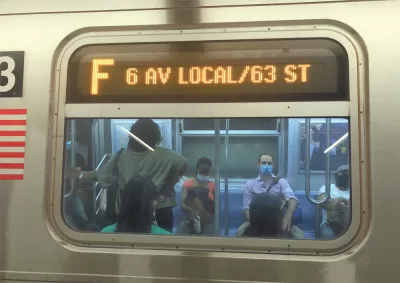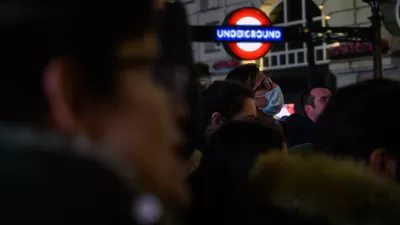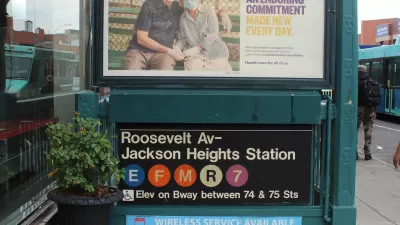Almost all heavy rail transit stations lost riders in 2020, but some stations lost far fewer riders than others. The data reveals lessons for transit planning beyond the end of the pandemic (whenever that happens).

Yonah Freemark shares the results of new analysis about how the pandemic has altered ridership patterns on U.S. heavy rail transit systems (i.e., the subway and el trains found in some U.S. cities—New York, Chicago, and Washington, D.C., and the San Francisco Bay Area in this study).
Here's how Freemark summarizes the findings of this analysis:
Though almost every station I studied saw fewer riders in 2020 compared with 2019, changes varied tremendously based on local characteristics, as neighborhoods with large Black populations, many households with low incomes, and more residents with lower levels of education lost fewer riders than other communities. Stations in employment-dense areas also lost considerably more riders than those in residential zones—likely because white collar workers with employment in downtowns were disproportionately able to work from home.
The source article linked below provides a lot more detail on each of the major findings. Freemark suggests that the ridership data should inform service choices by transit agencies that cater to the core riders that continued riding throughout the pandemic.

Study: Maui’s Plan to Convert Vacation Rentals to Long-Term Housing Could Cause Nearly $1 Billion Economic Loss
The plan would reduce visitor accommodation by 25,% resulting in 1,900 jobs lost.

North Texas Transit Leaders Tout Benefits of TOD for Growing Region
At a summit focused on transit-oriented development, policymakers discussed how North Texas’ expanded light rail system can serve as a tool for economic growth.

Why Should We Subsidize Public Transportation?
Many public transit agencies face financial stress due to rising costs, declining fare revenue, and declining subsidies. Transit advocates must provide a strong business case for increasing public transit funding.

How to Make US Trains Faster
Changes to boarding platforms and a switch to electric trains could improve U.S. passenger rail service without the added cost of high-speed rail.

Columbia’s Revitalized ‘Loop’ Is a Hub for Local Entrepreneurs
A focus on small businesses is helping a commercial corridor in Columbia, Missouri thrive.

Invasive Insect Threatens Minnesota’s Ash Forests
The Emerald Ash Borer is a rapidly spreading invasive pest threatening Minnesota’s ash trees, and homeowners are encouraged to plant diverse replacement species, avoid moving ash firewood, and monitor for signs of infestation.
Urban Design for Planners 1: Software Tools
This six-course series explores essential urban design concepts using open source software and equips planners with the tools they need to participate fully in the urban design process.
Planning for Universal Design
Learn the tools for implementing Universal Design in planning regulations.
City of Santa Clarita
Ascent Environmental
Institute for Housing and Urban Development Studies (IHS)
City of Grandview
Harvard GSD Executive Education
Toledo-Lucas County Plan Commissions
Salt Lake City
NYU Wagner Graduate School of Public Service





























